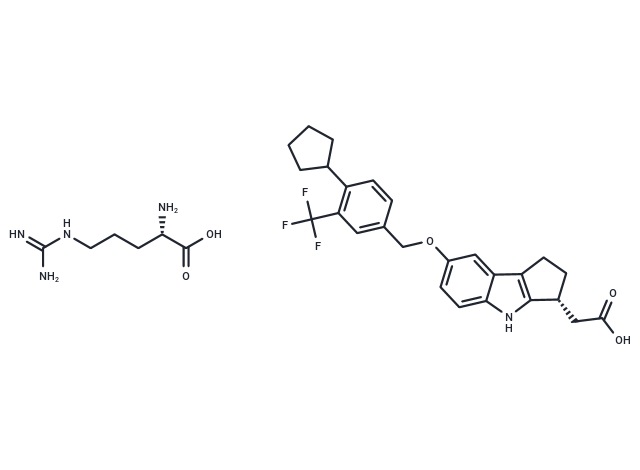Shopping Cart
- Remove All
 Your shopping cart is currently empty
Your shopping cart is currently empty

Etrasimod arginine is used in the Treatment of Autoimmune and Inflammatory Diseases.

| Pack Size | Price | Availability | Quantity |
|---|---|---|---|
| 25 mg | $1,520 | 6-8 weeks | |
| 50 mg | $1,980 | 6-8 weeks | |
| 100 mg | $2,500 | 6-8 weeks |
| Description | Etrasimod arginine is used in the Treatment of Autoimmune and Inflammatory Diseases. |
| Alias | APD334 L-Arginine |
| Molecular Weight | 631.69 |
| Formula | C32H40F3N5O5 |
| Cas No. | 1206123-97-8 |
| Relative Density. | no data available |
| Storage | Powder: -20°C for 3 years | In solvent: -80°C for 1 year | Shipping with blue ice. |

Copyright © 2015-2025 TargetMol Chemicals Inc. All Rights Reserved.